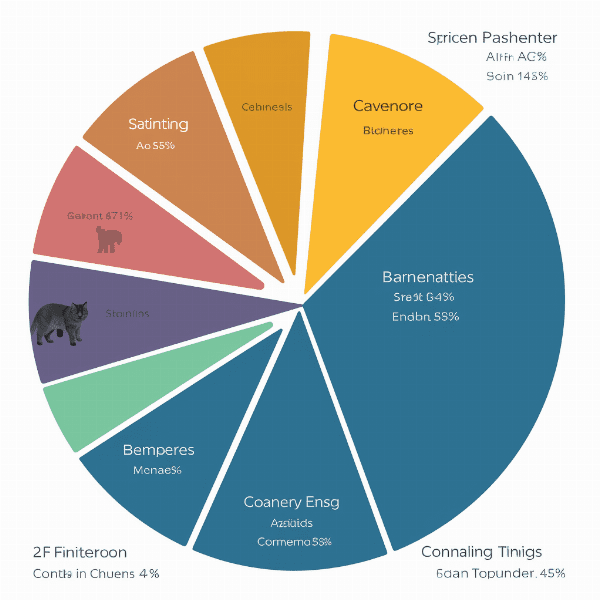Table of Contents
- Understanding Nasal Cancer in Cats
- Common Symptoms of Nasal Cancer in Cats
- Diagnosis of Nasal Cancer in Cats
- Treatment Options for Nasal Cancer in Cats
- Surgery for Nasal Cancer in Cats
- Radiation Therapy for Nasal Cancer in Cats
- Chemotherapy for Nasal Cancer in Cats
- Palliative Care for Cats with Nasal Cancer
- Prognosis and Life Expectancy for Cats with Nasal Cancer
- Preventing Nasal Cancer in Cats
Understanding Nasal Cancer in Cats
Nasal cancer is a rare but serious condition that can affect cats of any age or breed. This type of cancer often begins in the tissues of the nasal cavity and can quickly spread to other areas of the body if left untreated. In this section, we will explore the causes, risk factors, and types of nasal cancer that commonly affect cats.
Causes of Nasal Cancer in Cats
The exact cause of Nasal cancer in cats is unknown, but several factors may contribute to its development. Exposure to environmental toxins, such as secondhand smoke, air pollution, and chemicals, may increase a cat’s risk of developing this type of cancer. In addition, genetics and breed may also play a role in a cat’s susceptibility to developing nasal cancer.
Risk Factors for Nasal Cancer in Cats
Certain factors may increase a cat’s risk of developing nasal cancer. Cats that are regularly exposed to environmental toxins or live in areas with high levels of air pollution may be at a higher risk of developing this type of cancer. Additionally, some breeds of cats, such as Siamese and Himalayan, may have a higher incidence of nasal cancer than others.
Types of Nasal Cancer in Cats
There are several types of nasal cancer that can affect cats, including:
- Squamous cell carcinoma
- Adenocarcinoma
- Fibrosarcoma
- Lymphoma
Squamous cell carcinoma is the most common type of nasal cancer in cats, accounting for approximately 60% of all cases. This type of cancer typically affects older cats and can be aggressive, spreading quickly to other areas of the body.
Adenocarcinoma is a less common type of nasal cancer in cats, but it can also be aggressive and quickly spread to other areas of the body. This type of cancer typically affects younger cats and can be difficult to diagnose.
Fibrosarcoma is a rare type of nasal cancer that typically affects cats under the age of 10. This type of cancer can be slow-growing and may not spread to other areas of the body.
Lymphoma is a type of cancer that affects the lymphatic system and can occur in various areas of the body, including the nasal cavity. This type of cancer can be aggressive and quickly spread to other areas of the body if left untreated.
Understanding the different types of nasal cancer in cats is crucial in determining the best treatment plan for your feline friend. In the next section, we will explore the common symptoms of nasal cancer in cats, which can help you identify the disease early and seek prompt veterinary care.

Common Symptoms of Nasal Cancer in Cats
Nasal cancer in cats can be difficult to detect in its early stages, as the symptoms may be subtle and easily mistaken for other common feline health issues. However, early detection is crucial in improving the prognosis for cats with nasal cancer. In this section, we will explore the common symptoms of nasal cancer in cats.
Nasal Discharge and Bleeding
One of the most common symptoms of nasal cancer in cats is nasal discharge and bleeding. This may be a clear or bloody discharge that is often accompanied by sneezing or sniffling. In some cases, the discharge may be one-sided, indicating that the cancer is affecting only one nostril.
Breathing Difficulty
Cats with nasal cancer may experience difficulty breathing, especially as the cancer progresses and obstructs the nasal passages. This can lead to snoring, wheezing, or even open-mouth breathing. In severe cases, cats may show signs of respiratory distress, such as gasping for air or rapid breathing.
Facial Swelling and Deformity
Nasal cancer can also cause facial swelling and deformity, particularly around the eyes and nose. This may be due to the growth of the cancerous tumor, which can put pressure on surrounding tissues and bones.
Loss of Appetite and Weight Loss
Cats with nasal cancer may also experience a loss of appetite and subsequent weight loss. This can be due to a variety of factors, including difficulty breathing, nasal congestion, or pain when eating.
Changes in Behavior
Changes in behavior can also be a sign of nasal cancer in cats. Cats may become more irritable, lethargic, or withdrawn, and may exhibit a decreased interest in activities they once enjoyed.
If you notice any of these symptoms in your cat, it is important to seek veterinary care promptly. While these symptoms may be caused by other health issues, early detection and treatment of nasal cancer can greatly improve your cat’s prognosis and quality of life. In the next section, we will explore the diagnosis of nasal cancer in cats, including the various tests and procedures used by veterinarians to diagnose this condition.

Diagnosis of Nasal Cancer in Cats
Diagnosing nasal cancer in cats can be challenging, as the symptoms of this condition may be similar to those of other feline health issues. However, with prompt veterinary care and the use of various diagnostic tests, it is possible to accurately diagnose nasal cancer in cats. In this section, we will explore the various tests and procedures used by veterinarians to diagnose nasal cancer in cats.
Physical Examination
The first step in diagnosing nasal cancer in cats is a thorough physical examination. During this exam, your veterinarian will check your cat’s nose, mouth, and throat for signs of inflammation, swelling, or growths. They may also check your cat’s lymph nodes for signs of cancer.
Imaging Tests
Imaging tests, such as X-rays, CT scans, and MRIs, can also be used to diagnose nasal cancer in cats. These tests can provide detailed images of your cat’s nasal cavity, allowing veterinarians to identify any tumors or growths that may be present.
Biopsy
A biopsy is a procedure in which a small sample of tissue is taken from the suspected cancerous area and examined under a microscope. This can help veterinarians determine the type of cancer present and its severity.
Blood Tests
Blood tests can also be used to diagnose nasal cancer in cats. These tests can detect the presence of certain cancer markers or abnormalities that may indicate the presence of cancer.
By using a combination of these diagnostic tests, veterinarians can accurately diagnose nasal cancer in cats and develop an appropriate treatment plan. In the next section, we will explore the various treatment options available for cats with nasal cancer.
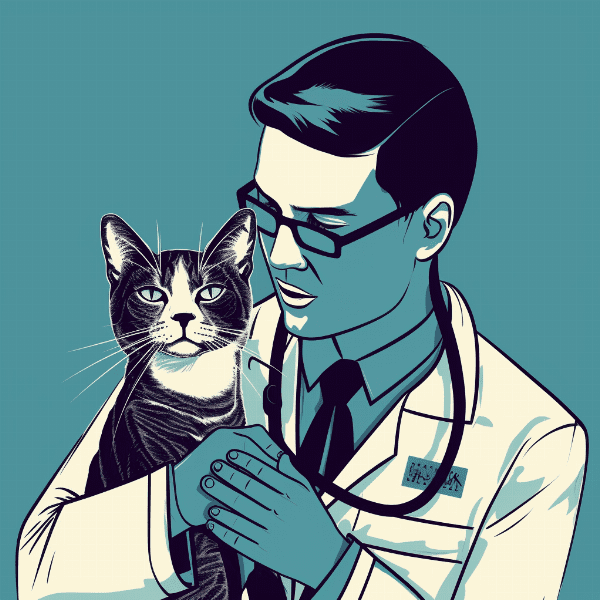
Treatment Options for Nasal Cancer in Cats
Surgery
Surgery is often the preferred treatment for nasal cancer in cats, especially if the cancer is localized to one area of the nasal cavity. During surgery, the tumor is removed along with a margin of healthy tissue to ensure that all cancerous cells are removed. In some cases, surgery may not be possible if the cancer has spread to other areas of the body.
Radiation Therapy
Radiation therapy is a common treatment for nasal cancer in cats, especially if the cancer cannot be completely removed with surgery. This treatment involves the use of high-energy radiation to destroy cancer cells. Radiation therapy can be delivered externally or internally, depending on the type and stage of cancer.
Chemotherapy
Chemotherapy is another treatment option for nasal cancer in cats, particularly if the cancer has spread to other areas of the body. This treatment involves the use of drugs to kill cancer cells. Chemotherapy can be administered orally, intravenously, or through injections.
Palliative Care
Palliative care is a treatment option that focuses on improving the quality of life for cats with nasal cancer. This may include pain management, nutritional support, and other supportive care measures. Palliative care is typically used when the cancer cannot be treated or cured.
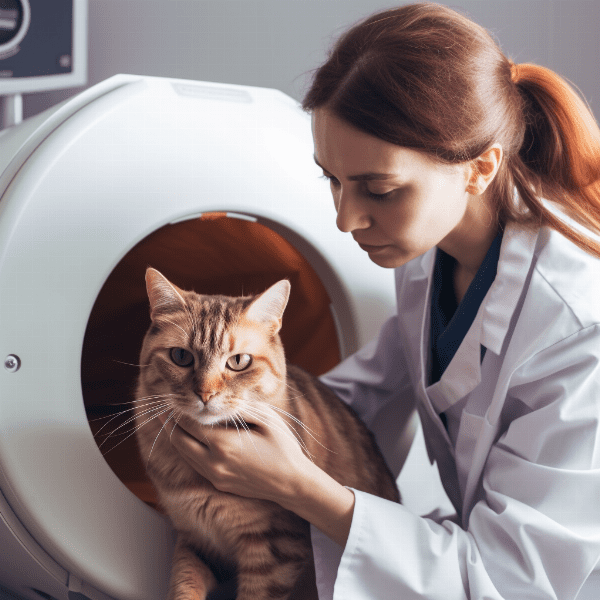
Surgery for Nasal Cancer in Cats
Endoscopic Surgery
Endoscopic surgery is a minimally invasive procedure in which a small camera is inserted into the nasal cavity to view the inside of the nose and throat. This can help veterinarians identify the location and extent of the tumor, as well as any other abnormalities that may be present. Once the tumor is identified, specialized tools can be used to remove the tumor without the need for large incisions.
Rhinotomy
Rhinotomy is a more invasive surgical procedure in which a large incision is made in the nose to access the tumor. This procedure is typically reserved for more advanced cases of nasal cancer that cannot be treated with endoscopic surgery. During rhinotomy, the tumor is removed along with a margin of healthy tissue to ensure that all cancerous cells are removed.
Maxillectomy
Maxillectomy is a surgical procedure in which part or all of the upper jaw is removed to access the tumor. This procedure is typically reserved for cases in which the tumor has spread to the bones of the upper jaw. Maxillectomy is a more invasive procedure and may require a longer recovery time than other surgical options.
Complications of Surgery
As with any surgical procedure, there are risks and potential complications associated with surgery for nasal cancer in cats. These may include bleeding, infection, and difficulty breathing. Your veterinarian will discuss the risks and benefits of surgery with you and help you determine the best course of action for your cat.
Surgery is often an effective treatment option for cats with nasal cancer, especially if the cancer is localized to one area of the nasal cavity. In the next section, we will explore radiation therapy as a treatment option for cats with nasal cancer.
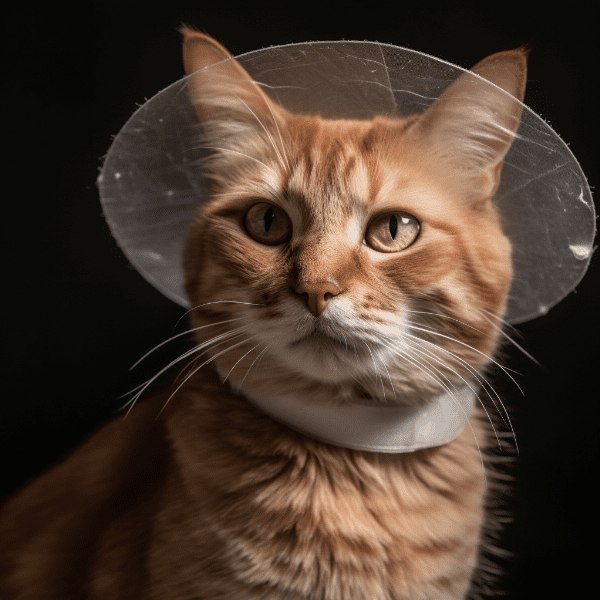
Radiation Therapy for Nasal Cancer in Cats
External Beam Radiation Therapy
External beam radiation therapy is the most common type of radiation therapy used to treat nasal cancer in cats. This treatment involves the use of high-energy radiation beams that are directed at the tumor from outside the body. The radiation beams are carefully targeted to minimize damage to surrounding healthy tissue.
Internal Radiation Therapy
Internal radiation therapy, also known as brachytherapy, involves the placement of small radioactive sources directly into the tumor. This allows for a more precise delivery of radiation to the tumor, while minimizing damage to surrounding healthy tissue. Internal radiation therapy is not commonly used to treat nasal cancer in cats, but may be an option in certain cases.
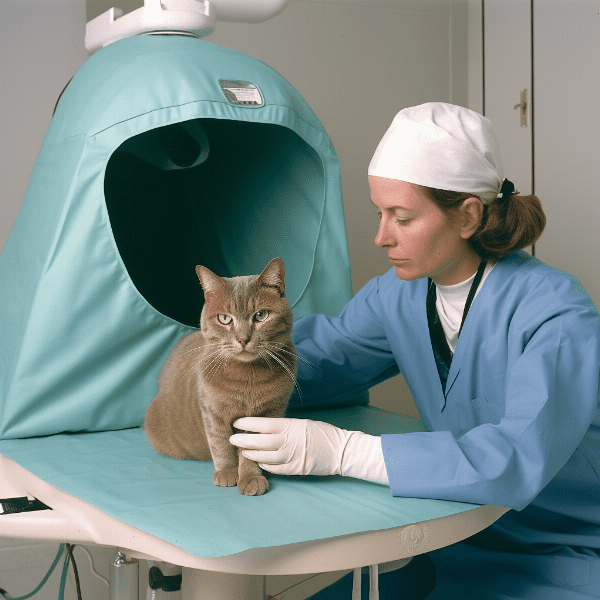
Chemotherapy for Nasal Cancer in Cats
Chemotherapy is a treatment option for nasal cancer in cats, particularly if the cancer has spread to other areas of the body. In this section, we will explore the various types of chemotherapy used to treat nasal cancer in cats.
Systemic Chemotherapy
Systemic chemotherapy involves the use of drugs that are administered orally, intravenously, or through injections. These drugs travel throughout the body and can help kill cancer cells in areas of the body where the cancer has spread.
Regional Chemotherapy
Regional chemotherapy involves the use of drugs that are administered directly into the area affected by the cancer. This can help increase the concentration of drugs in the affected area, while minimizing side effects in other areas of the body.
Side Effects of Chemotherapy
Chemotherapy can have side effects, including nausea, vomiting, and decreased appetite. These side effects are typically temporary and can be managed with medication and supportive care measures.
Chemotherapy is a treatment option for cats with nasal cancer, particularly if the cancer has spread to other areas of the body. Your veterinarian will work with you to develop a treatment plan that is tailored to your cat’s individual needs. In the next section, we will explore palliative care as a treatment option for cats with nasal cancer.
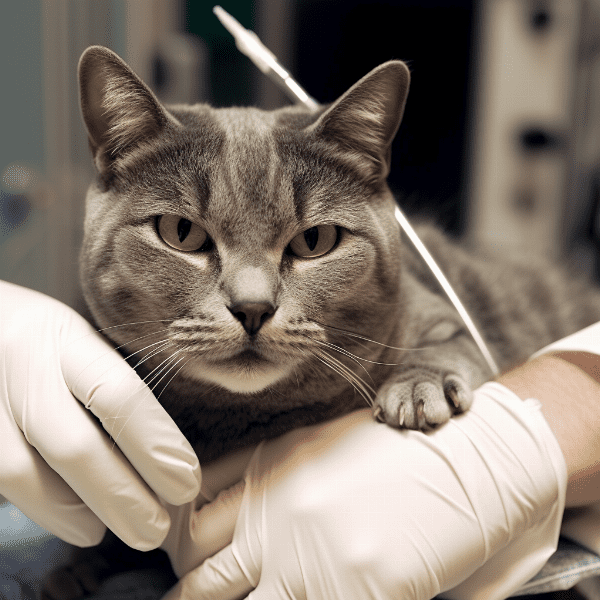
Palliative Care for Cats with Nasal Cancer
Palliative care is a treatment option for cats with nasal cancer that focuses on improving the quality of life and managing symptoms. In this section, we will explore the various palliative care measures that can be used for cats with nasal cancer.
Pain Management
Pain management is an important part of palliative care for cats with nasal cancer. Your veterinarian may prescribe pain medication to help manage your cat’s pain and improve their quality of life.
Nutritional Support
Cats with nasal cancer may experience a decreased appetite and subsequent weight loss. Nutritional support, such as the use of appetite stimulants or feeding tubes, can help ensure that your cat is receiving adequate nutrition.
Environmental Modifications
Environmental modifications can also be used to improve your cat’s quality of life. This may include providing a comfortable and quiet space for your cat to rest, as well as minimizing stress and providing mental stimulation.
Hospice Care
Hospice care is a type of palliative care that is focused on providing comfort and support to cats with terminal illnesses, including nasal cancer. Hospice care may include pain management, nutritional support, and other supportive care measures.
Palliative care is an important treatment option for cats with nasal cancer, particularly in cases where the cancer cannot be treated or cured. Your veterinarian will work with you to develop a palliative care plan that is tailored to your cat’s individual needs.

Prognosis and Life Expectancy for Cats with Nasal Cancer
The prognosis and life expectancy for cats with nasal cancer depend on several factors, including the type and stage of cancer, the cat’s overall health, and the treatment options chosen. In this section, we will explore the prognosis and life expectancy for cats with nasal cancer.
Prognosis
The prognosis for cats with nasal cancer can vary widely depending on the type and stage of cancer. Cats with early-stage nasal cancer that is localized to one area of the nasal cavity may have a more favorable prognosis than cats with advanced-stage cancer that has spread to other areas of the body.
Life Expectancy
The life expectancy for cats with nasal cancer can also vary widely depending on the type and stage of cancer. Cats with early-stage nasal cancer that is treated promptly may live for several years after treatment, while cats with advanced-stage cancer may have a more limited life expectancy.
Treatment Options
The treatment options chosen for cats with nasal cancer can also affect their prognosis and life expectancy. Cats that undergo surgery or radiation therapy may have a better prognosis than cats that receive only palliative care. Chemotherapy can also improve the prognosis for cats with nasal cancer, particularly in cases where the cancer has spread to other areas of the body.
Quality of Life
In addition to considering the prognosis and life expectancy, it is important to consider your cat’s quality of life when making treatment decisions. Palliative care may be the best option for cats with advanced-stage cancer or those that are not candidates for more aggressive treatments.
If your cat is diagnosed with nasal cancer, it is important to work closely with your veterinarian to develop a treatment plan that is tailored to your cat’s individual needs. With prompt veterinary care and appropriate treatment, many cats with nasal cancer can enjoy a good quality of life for several years after diagnosis.
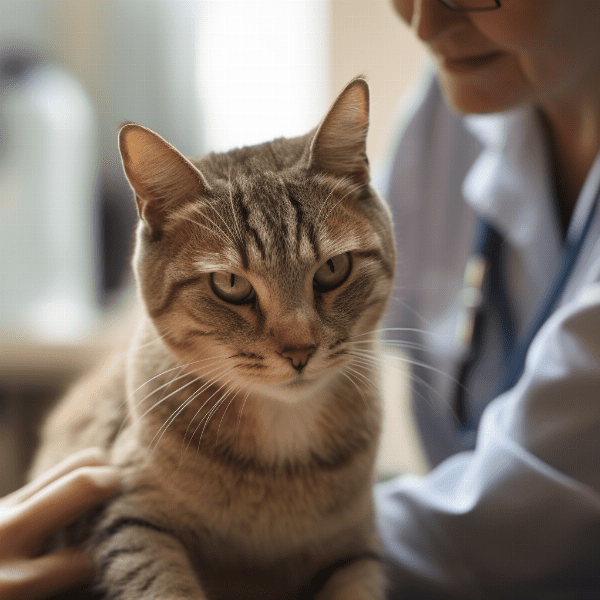
Preventing Nasal Cancer in Cats
Preventing nasal cancer in cats is not always possible, but there are several steps that pet owners can take to reduce their cat’s risk of developing this condition. In this section, we will explore some of the ways that you can help prevent nasal cancer in your cat.
Environmental Exposures
Exposure to certain environmental toxins can increase your cat’s risk of developing nasal cancer. Avoid exposing your cat to secondhand smoke, asbestos, and other environmental toxins.
Vaccinations
Certain viruses, such as feline leukemia virus (FeLV) and feline immunodeficiency virus (FIV), can increase your cat’s risk of developing cancer, including nasal cancer. Ensure that your cat is up to date on all recommended vaccinations, including those for FeLV and FIV.
Diet and Exercise
Maintaining a healthy diet and ensuring that your cat gets plenty of exercise can help reduce their risk of developing cancer, including nasal cancer. Talk to your veterinarian about the best diet and exercise plan for your cat.
Regular Check-Ups
Regular veterinary check-ups can help detect cancer in its early stages, when it is most treatable. Ensure that your cat receives regular check-ups and that any signs of illness or abnormalities are promptly addressed.
While preventing nasal cancer in cats is not always possible, taking these steps can help reduce your cat’s risk of developing this condition. By working closely with your veterinarian and providing your cat with a healthy environment, you can help ensure that they live a happy and healthy life.



